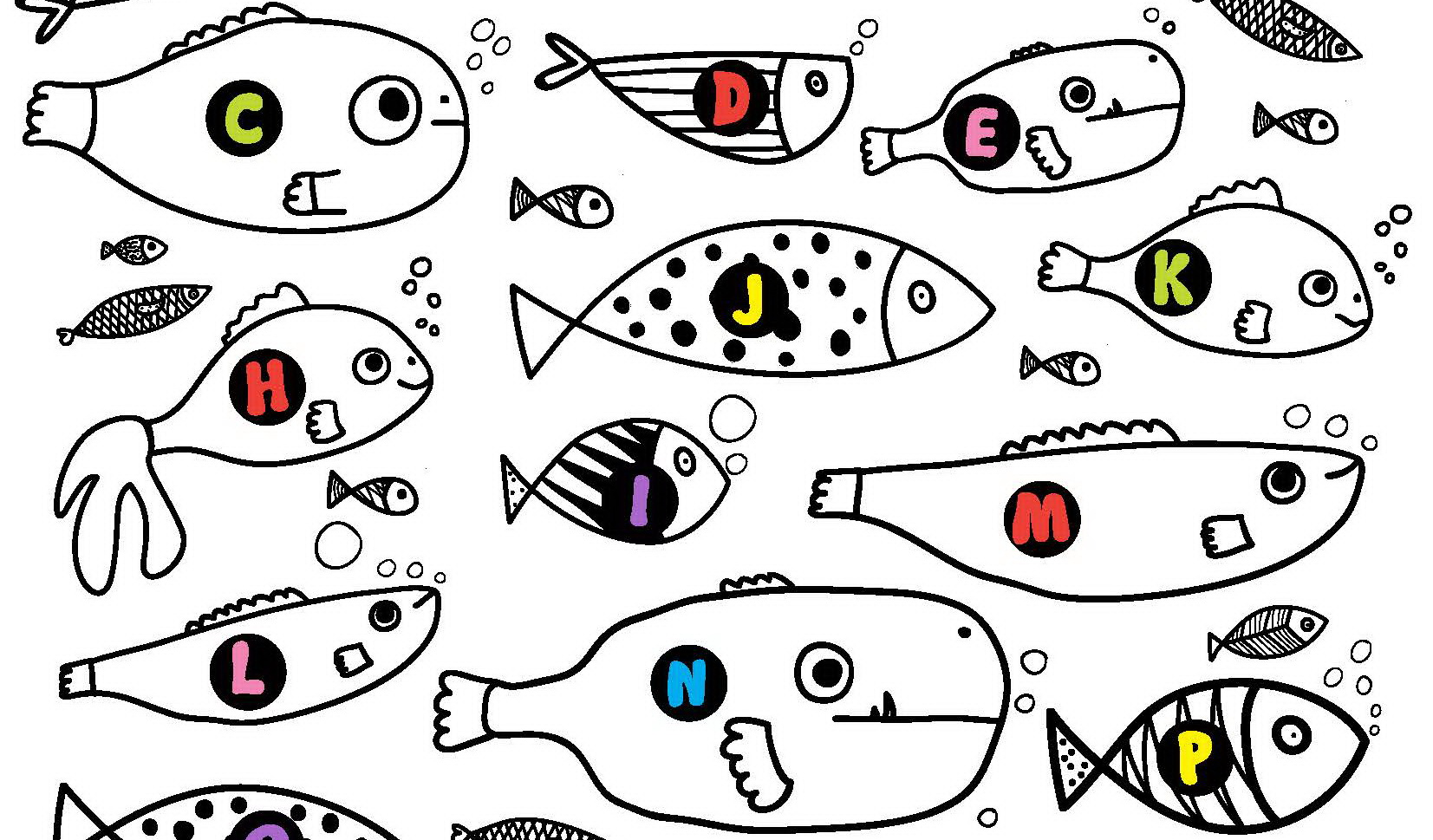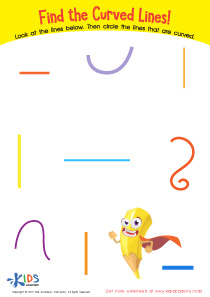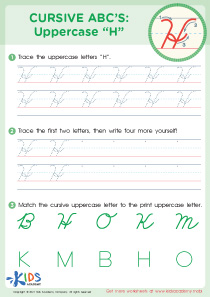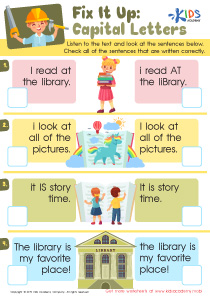Lowercase identification Letter Recognition Worksheets for Ages 5-8
5 filtered results
-
From - To
Enhance your child's literacy journey with our engaging Lowercase Identification Letter Recognition Worksheets, designed specifically for ages 5-8. These interactive worksheets not only promote recognizing and identifying lowercase letters but also include fun activities that stimulate interest in reading and writing. Perfect for home or classroom use, these resources offer a playful approach to learning essential alphabet skills. Each worksheet features clear visuals and exciting exercises that keep young learners motivated. Support your child's development and foster a love for letters with our thoughtfully crafted worksheets, making learning a delightful experience for both children and parents alike!
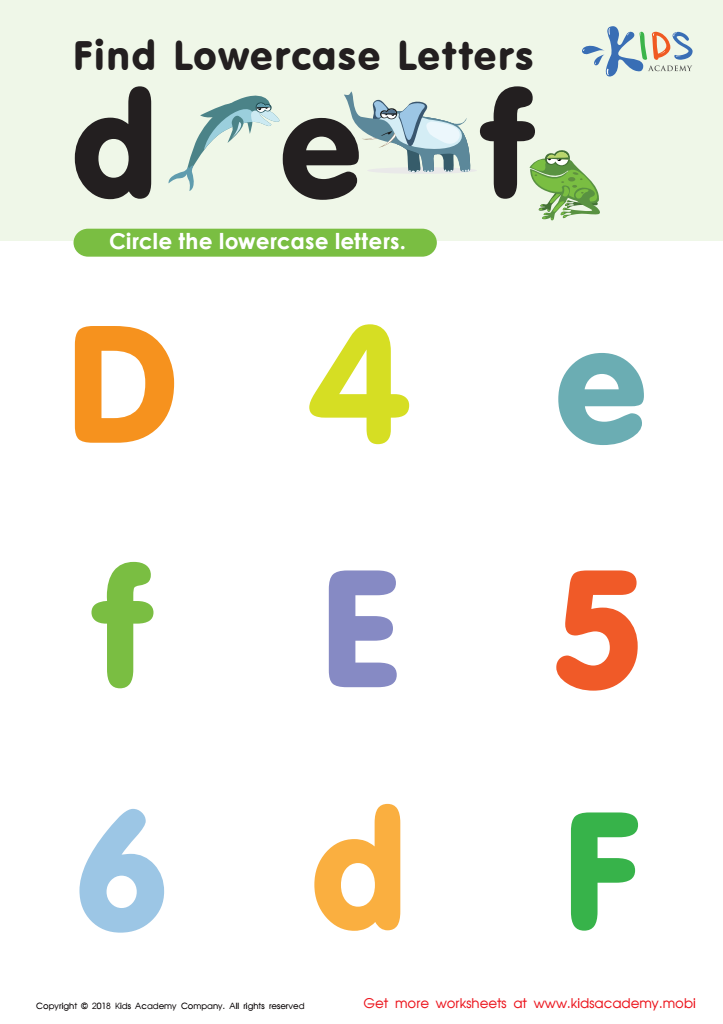

Find Lowercase Letters d e f Worksheet
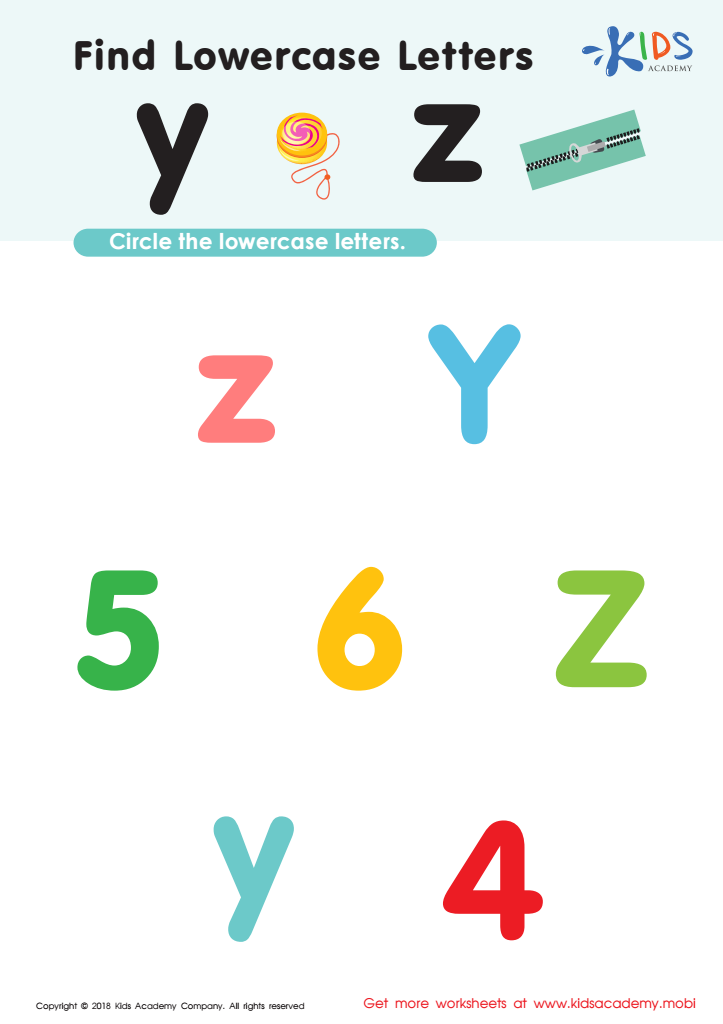

Find Lowercase Letters y z Worksheet
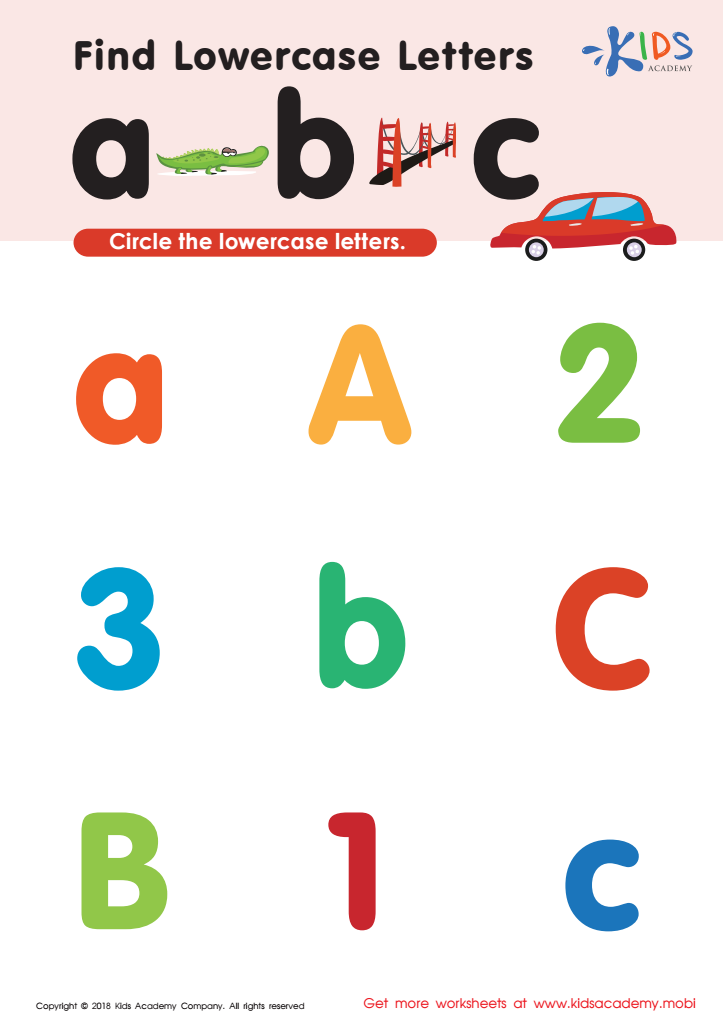

Find lowercase letters a b c Worksheet
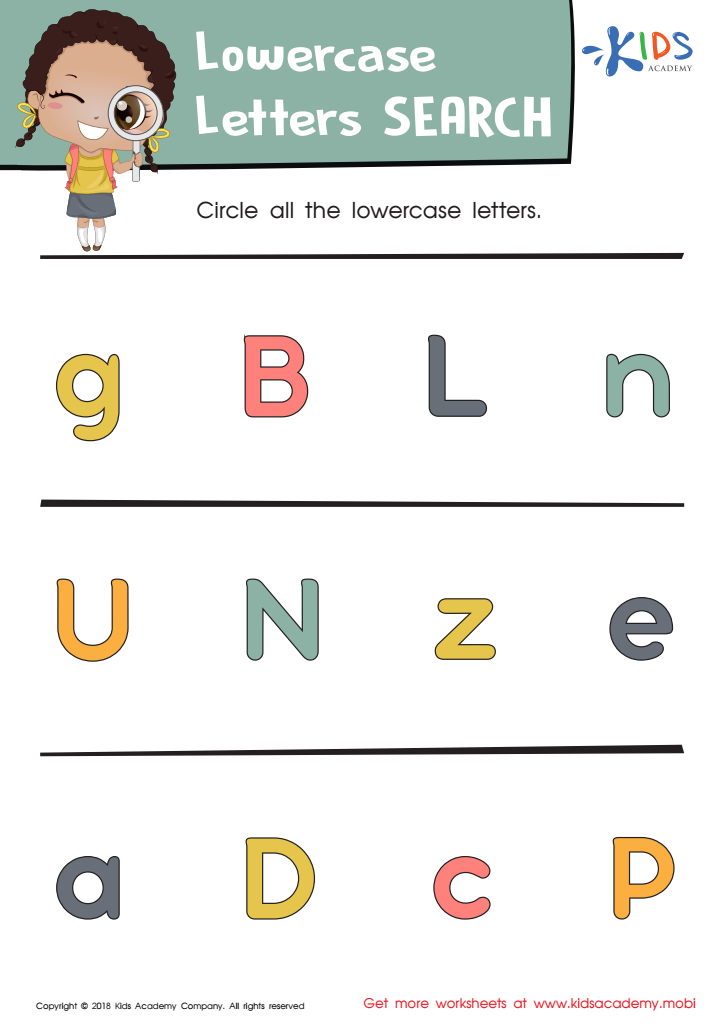

Lowercase Letters Search: Assessment Worksheet


Find Lowercase Letters v w x Worksheet
Lowercase letter recognition is crucial for children aged 5-8 as it forms a foundational skill for reading and writing. While uppercase letters catch attention due to their distinct shapes, lowercase letters are much more prevalent in everyday reading materials, making their recognition essential. Mastering lowercase letters enables children to decode words and understand texts, fostering a love for reading.
Additionally, lowercase identification prepares children for their writing tasks. As they learn to form letters, understanding the lowercase shapes helps them express themselves effectively. Early identification of letters builds confidence, allowing children to participate more actively in classroom activities.
Moreover, lowercase recognition contributes to early literacy skills, promoting phonemic awareness and vocabulary development. As children recognize and interact with these letters, they develop an understanding of letter-sound correspondence essential for reading proficiency.
Finally, fostering a supportive environment that promotes lowercase letter recognition at home or school can enhance a child's overall educational experience. Engaging in fun, interactive activities—such as games or crafts—can help solidify their learning. Investing in this skill is paramount for educators and parents as it lays the groundwork for a child’s academic success and lifelong love of learning.
 Assign to My Students
Assign to My Students











